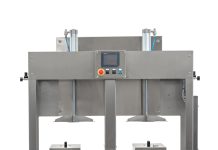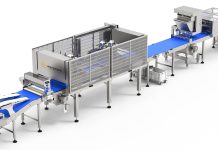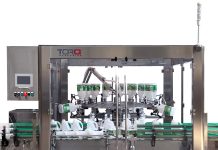 Chardonnay of New Zealand
Chardonnay of New Zealand
At the moment of the bottling the wine presents good general features even if it is worth highlighting that the content of volatile acidity and acetaldehyde are relatively high for a white. During the storage the wine maintains practically unchanged values for most parameters with a high content of free SO2 and the ratio between free SO2 and total SO2 remaining constant in the time (picture 4) considering the slight variations of pH. The analysis of the variance (unvaried ANOVA) and the test of Duncan show how the only parameters able to produce significant variations in the wine in the time are colour and dissolved oxygen and such difference can be appreciated after 6 months’ storage. The colour gets deeper (picture 5) whereas dissolved oxygen decreases, as in the evolution shown in picture 6 showing the interval of the measurements performed at every sampling and the relevant average. At the first sampling the values of dissolved oxygen are more dispersed while the measurements are more reproducible in the following storage phases. The most important differences among the bottles found in the starting phases of the storage are probably derived from the bottle fi lling and sealing phase. The evolution of colour and oxygen represent the typical evolution of a white wine in the bottle during the fi rst months of storage, when the wine gradually and slowly reaches a new state of balance after the passage from the tank to the bottle. The analysis of the sensory profi le of the product in the time confi rms that the modifi cations in the composition of the wine are not remarkable. Three months after the bottling the wine present high olfactory and gustative intensity, it is clean fruity and it is characterized by pleasant vegetal notes with hints of green apple. The colour is straw yellow with greenish tones. One year after the bottling the wine shows a statistically remarkable reduction (ANOVA + test of Duncan) for the gustative freshness with respect to the product analysed after three months while the features concerning its cleanness and the fl oral notes are only slightly reduced (picture 7). Besides, the answers given by tasters do not signal any particular anomalies ascribable to the evolution in the bottle.
Conclusions
The statistic elaboration of the data collected about the Chablis closed with natural cork, screw-cap and synthetic closure shows that the general parameters, such as pH, total acidity, extract, and sugar do not differ remarkably from one type of closure to another. On the contrary, total and free sulphur dioxide result to be affected by the closure: screw caps allow maintaining a higher quantity of sulphur dioxide that, conversely, decreases in the bottles sealed with other closures. Besides, a better reproducibility of the data has been found in the bottles closed with screw caps in comparison to the higher variability observed in the samples closed with natural corks or synthetic closures. As to the Chardonnay of New Zealand, the performance of the Wak closure used in this test seems to be rather good since the analysis show a good retention of both free and total SO2 in the time. The progressive increase of the optical density measured at 410 and 420 nm is statistically relevant and could be linked to the presence of relatively high
levels of oxygen at the bottling signifi cantly reducing in the time. Besides, the consistency in the time of the components of the wine, the statistic analysis of the data shows also the maintenance of high scores at the sensory analysis with a remarkable reduction only of the freshness of the taste.




